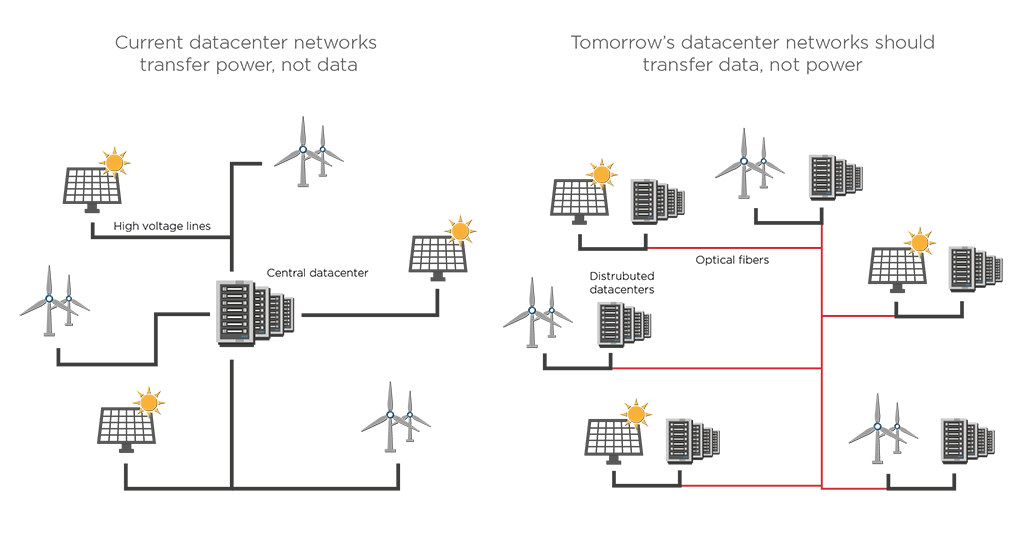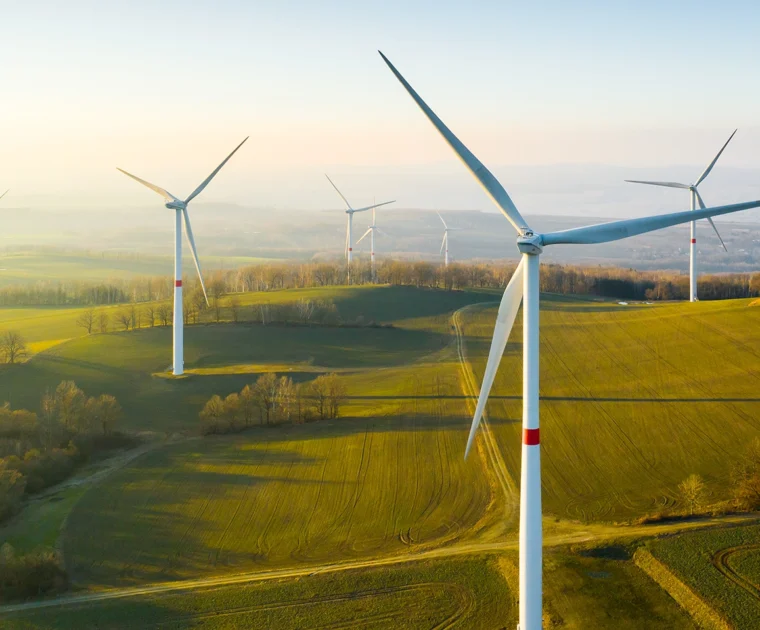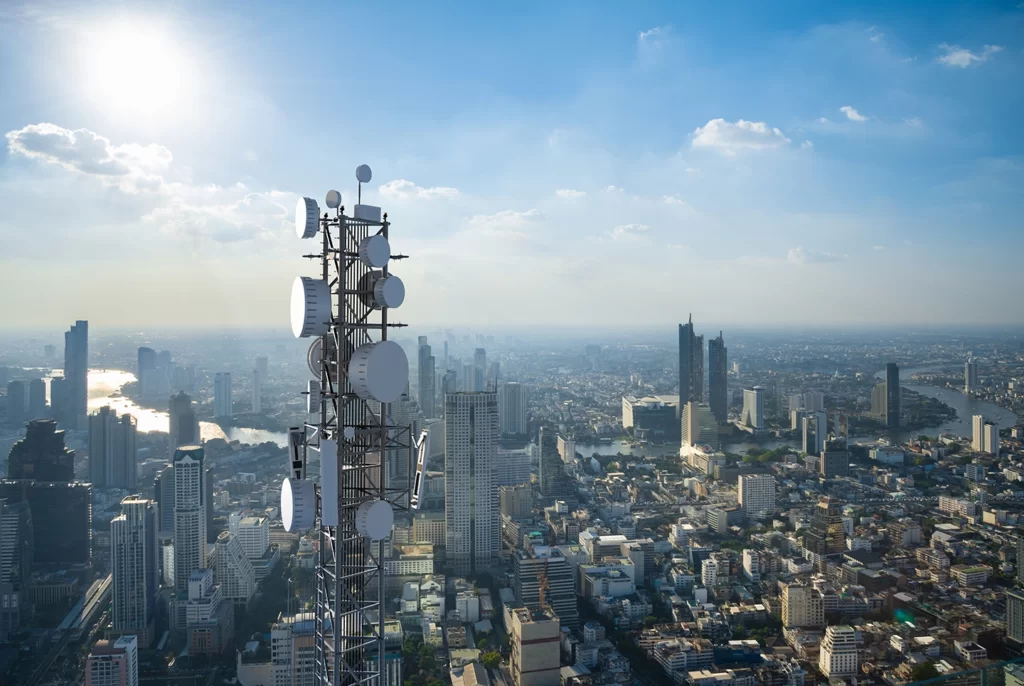The quest for sustainable and clean energy solutions has increasingly turned towards photonics innovations. This…
The quest for sustainable and clean energy solutions has increasingly turned towards photonics innovations. This technology, centered around the science and engineering of light, can enhance certain renewable system technologies or enable other infrastructure (such as data centers) to get closer to renewable energy sources.

Transfer Data, Not Power
Photonics can play a key role in rethinking the architecture of data centers. Photonics enables a more decentralized system of data centers with branches in different geographical areas connected through high-speed optical fiber links to cope with the strain of data center clusters on power grids.
For example, data centers can relocate to areas with available spare power, preferably from nearby renewable energy sources. Efficiency can increase further by sending data to branches with spare capacity. The Dutch government has already proposed this kind of decentralization as part of its spatial strategy for data centers.
Figure 1: High-speed fiber-optic connections allow data processing and storage to be moved to locations where excess (green) energy is available. Data can be moved elsewhere if power is needed for other purposes, such as charging electric vehicles.
Photonics and Solar Energy
Solar power is gaining popularity as a clean energy source that promises energy independence and environmental benefits while becoming increasingly cost-effective. Although it currently meets only a small portion of global energy needs due to its high costs compared to other technologies, significant advancements have been made thanks to government support and private investment. These developments are steadily positioning solar power as a viable mainstream energy option.
The field of photovoltaics focuses on converting sunlight directly into electricity using materials that exhibit the photovoltaic effect, primarily through solar panels. This field overlaps with the electronics semiconductor industry as both utilize similar materials, such as silicon, and share similar manufacturing techniques.
Photonics and photovoltaics are closely related because they use techniques to manipulate light. Therefore, some techniques (such as optical waveguides on semiconductors) used for photonic communication systems could also be useful to the photovoltaic sector. Meanwhile, advances in photonic communications, such as developing new materials that interact efficiently with light, can directly enhance the efficiency and effectiveness of photovoltaic cells, which capture solar energy. For example, developing photonic crystals and other nanostructured materials can lead to solar panels that trap sunlight more effectively.
There are other creative ways to use photonics technology here. For example, Ambient Photonics is a startup that develops low-light solar cells designed to generate power efficiently under indoor lighting conditions. Their technology focuses on providing a clean, sustainable energy source for powering Internet of Things (IoT) devices and other electronics that traditionally rely on batteries. By using their photovoltaic cells, Ambient aims to reduce dependency on traditional battery power and enhance the sustainability of devices through renewable energy integration.
The Impact on Wind Energy Monitoring
PhotonFirst, a Dutch startup, develops advanced photonic sensors specifically designed to enhance the efficiency and maintenance of wind turbines. Their sensors use light to measure critical turbine parameters in real-time, informing turbine operators about the behavior of components such as blades, towers, gearboxes, and cabling. This precise data helps optimize turbine performance, predict maintenance needs, and reduce downtime, thereby improving energy output and extending the lifespan of the turbines.
Initially, fiber optic sensing in wind turbines was only used at the blade roots to monitor load and temperature, and expanding this technology throughout large turbines was costly. However, PhotonFirst is trying to broaden the applications of such sensor systems while also enhancing their performance at a more manageable cost.
Takeaways
The synergy between photonics and renewable energy can lead to some important advances in the pursuit of sustainable power. Through advancements in solar energy conversion, wind energy monitoring, and moving data centers closer to renewable energy sources, photonics can help change how we generate, distribute, and utilize energy.
Tags: advances, Ambient Photonics, clean energy, data centers, Decentralization, EFFECT Photonics, electricity, energy output, engineering, high-speed optical fiber, infrastructure, innovations, Internet of Things (IoT) devices, lifespan, light, low-light solar cells, maintenance, manufacturing techniques, materials, nanostructured materials, optimization, photonic communication systems, photonic crystals, Photonic Sensors, Photonics, photovoltaics, power grids, real-time data, renewable energy, renewable system technologies, science, Semiconductor Industry, solar panels, Solar power, spatial strategy, Sustainable, sustainable power, synergy, technology, turbine parameters, wind energy monitoring


